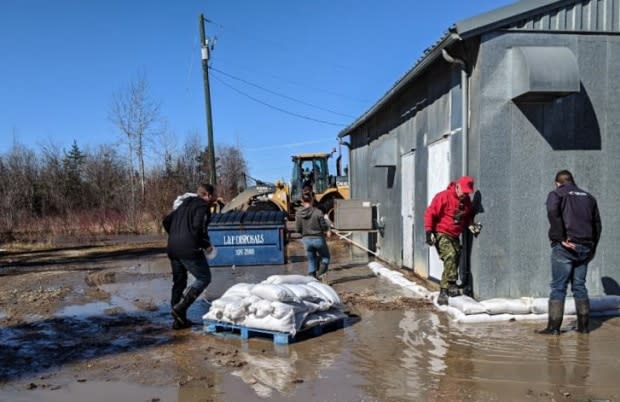Province to spend $147 million on northern Alberta communities damaged by floods
Disaster relief funding for punishing spring floods is welcome news to civic leaders in northern Alberta.
Mackenzie County Reeve Josh Knelsen is hopeful some of the $147 million investment, announced Friday, will help restore the 230-year old riverside hamlet of Fort Vermilion.
"It's a relief for sure. We've expressed that there's definitely a need," Knelsen said on Friday.
The disaster money is intended to help families, businesses and communities rebuild and recover from ice jams that prompted destructive flooding in the Regional Municipality of Wood Buffalo and Mackenzie County.
About 500 people in Mackenzie County had to leave home last month when a 40-kilometre ice jam pushed the Peace River over its banks. Alberta Premier Jason Kenney said Friday it was the worst flood in the area since 1934.
At last count, 147 homes, 15 commercial buildings, nine government buildings and three cemeteries in the county were damaged, Knelsen said.

Also in late April, a 25-kilometre sheet of ice effectively dammed the Athabasca River in Fort McMurray, forcing the Clearwater River to reverse course and flood the city's downtown core. An estimated 1,230 structures were damaged.
Wood Buffalo Mayor Don Scott said in a Friday statement $100 million of the relief funding would be allotted to the rural municipality.
"I recognize that we have many challenges remaining, and, in many ways, the hard work is just getting started," Scott's statement said. "There will be ups and downs and successes and difficulties, and I know that while this important funding announcement from Premier Kenney and the province will go a long way, there is no perfect recovery."
A provincial government news release said tenants, homeowners, business owners and agricultural operators in both areas can begin applying online Monday for funds to cover cleanup and repair to uninsured infrastructure and buildings.
"This spring was something else," Kenney said of the floods on Friday. He was flanked by Municipal Affairs Minister Kaycee Madu and a handful of northern Alberta MLAs at an Edmonton news conference.
"Albertans feel for everyone affected by this disaster, but especially for the people of Fort McMurray who have been going through so many tough times," Kenney said, referencing the catastrophic 2016 wildfire and beleaguered oil industry.
Tallying the damages
Kenney said about 3,000 people in northeastern Alberta are still displaced from uninhabitable homes and businesses. A boil water advisory will likely be in place for months.
Madu said the damage in Mackenzie county is roughly $45 million, but assessments are ongoing.
Knelsen and the county's deputy reeve, Walter Sarapuk, said on Friday the roads of Fort Vermilion are now clear of water. Ice chunks as large as cars still rest on some properties, Sarapuk said, and there is mud everywhere.
Dumpsters full of waterlogged drywall and damaged belongings line the streets of the hamlet, Knelsen said. Trucks are constantly hauling out the debris.

A county water treatment plant was flooded, as were some sewage lift stations. Some county vehicles became submerged. The most damaged homes will have to be demolished.
It could take until the end of the summer before they get the area back to normal, Knelsen said.
"Hopefully [the disaster funding] is enough that everybody benefits from it," he said. "I'm sure that there will still be a need, even though this announcement came through. It's very good. But to get everybody exactly to where they were, I can't see that covering it, especially if you consider the amount of homes that were damaged in Fort McMurray."
The new funding is on top of $8 million already allotted for emergency payments to people who fled their homes to escape the rising water.
The province had offered emergency payments to those affected — $1,250 for adults and $500 for children.
Kenney said about 7,500 people have claimed the emergency payments thus far.


